Kurukshetra Summary: June 2024 – Tribal Art And Culture
1. Innovative Science Projects to Preserve Tribal Culture
- 1. Innovative Science Projects to Preserve Tribal Culture
- 2. Theyyam – The Tribal Cultural Dance
- 3. Vital role of tribal art in safeguarding cultural identity
- 4. Tribal Culture – The Potential for Global Representation
- 5. Agriculture Festivals: Integral Part Of Tribal Culture
- 6. Tribal Folk Dances of Northeast India
- 7. Embracing Diversity: Cultural Heritage of Tribes in India
Introduction
- Innovative science projects are vital for preserving indigenous heritage in tribal communities.
- These projects represent resilience against globalisation and modernization, helping sustain traditional customs and traditions.
Issues
- Cultural Erosion: Rapid globalisation and modernization threaten traditional tribal cultures, risking the loss of practices, languages, and customs.
- Environmental Degradation: Deforestation and climate change impact tribal livelihoods and cultural practices tied to their natural environment.
- Socio-economic Marginalisation: Tribal communities often face marginalisation and lack access to mainstream development opportunities, exacerbating their vulnerability.
Significance
- Cultural Preservation: Science projects help document and preserve indigenous knowledge systems and cultural practices, ensuring they are not lost.
- Community Empowerment: These initiatives empower tribal communities economically and socially, improving their socio-economic conditions and fostering self-reliance.
- Environmental Conservation: Projects integrate traditional ecological knowledge with modern conservation practices, promoting sustainable resource management.
Solutions
- Documentation and Preservation: Focuses on recording traditional practices, medicinal knowledge, oral histories, and cultural rituals to safeguard cultural richness.
- Technological Integration: Uses advanced techniques like remote sensing, GIS, and 3D modelling to conserve and restore cultural heritage sites effectively.
- Skill Development: Programs enhance skills among tribal youth and artisans, promoting entrepreneurship and sustainable livelihoods, and reducing dependency on traditional practices alone.
Efforts and Initiatives
- Department of Science & Technology (DST) Initiatives:
- Supports projects documenting indigenous knowledge and conserving cultural heritage sites.
- Promotes interdisciplinary research integrating traditional ecological knowledge with modern science.
- Schemes like SATHI and SEED fund grassroots innovations and empower tribal communities.
- North East Centre for Technology Application & Reach (NECTAR):
- Develops bamboo-based technologies and promotes sustainable practices.
- Initiatives include bamboo-based water towers and low-cost water treatment plants benefiting tribal communities.
- Focuses on skill development and employment generation through bamboo-related industries.
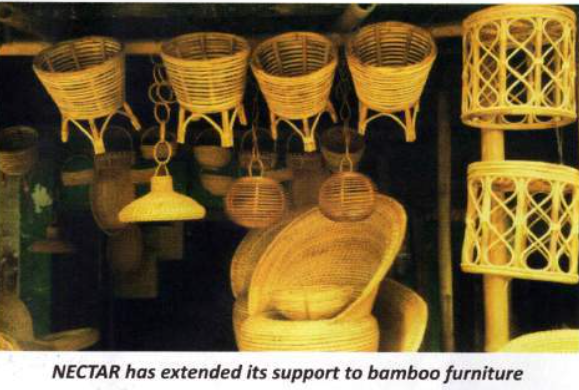
- Ministry of Environment, Forest and Climate Change Initiatives:
- Implements projects under the National Mission for Green India, integrating traditional ecological knowledge with biodiversity conservation.
- Supports community-based forest management and climate change adaptation tailored for tribal communities.
Flute Technology of Culm Cutting
- A technique that enables fast regeneration of bamboo, supporting traditional practices and providing a reliable material source for various applications.
Bamboo Furniture
- NECTAR’s support for bamboo furniture production provides a sustainable alternative to conventional materials, addressing environmental concerns and creating job opportunities.
Conclusion
- Innovative science projects are crucial for preserving tribal culture by combining traditional knowledge with modern science.
- These initiatives help safeguard cultural heritage, promote sustainable development, and support environmental conservation in tribal regions.
2. Theyyam – The Tribal Cultural Dance
Introduction
- Theyyam, also known as Kaliyattam or Theyyamkettu, is a vibrant ritualistic art form indigenous to northern Kerala, particularly in the Kolathunadu area, which includes the districts of Kasaragod, Kannur, Wayanad, and Kozhikode.
- This art form is deeply rooted in ancient traditions, with origins spanning over a millennium, and embodies the cultural, spiritual, and socio-economic fabric of rural communities in this region.

Historical and Cultural Context
- Origin and Evolution: Theyyam has its origins in ancient tribal rituals and animistic beliefs that were prevalent in Kerala’s rural hinterlands. Over centuries, it has evolved into a complex ritual art form, combining dance, music, mythology, and folklore. This evolution reflects a rich amalgamation of cultural practices and spiritual expressions.
- Geographical Spread: While predominantly practised in northern Kerala, Theyyam also finds its counterpart in the Tulunadu region of Karnataka, known as ‘Bhuta Kola’. This indicates the cultural exchanges and similarities across regional boundaries, highlighting the interconnectedness of cultural traditions in the region.
Spiritual and Ritualistic Dimensions
- Role and Significance: Theyyam serves as a conduit for spiritual expression. Performers embody deities, spirits, or ancestral heroes through elaborate rituals, vibrant costumes, and dynamic dance movements. This ritualistic art form plays a crucial role in mediating spiritual experiences and connecting the community with the divine.
- Community Cohesion: Theyyam fosters communal solidarity by reflecting and reinforcing the ethos, values, and communal bonds prevalent in agrarian societies. The ritualistic performances are integral to community life, reinforcing social ties and cultural continuity.
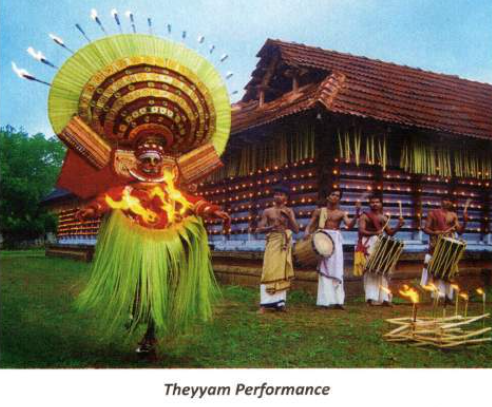
Socio-economic Impact
- Livelihoods and Economy: Theyyam significantly contributes to the local economy through tourism and cultural industries. It provides livelihoods for a range of individuals including performers, musicians, costume makers, and artisans. The economic impact extends to various sectors associated with the art form.
- Cultural Preservation: Theyyam plays a pivotal role in preserving tribal cultural heritage. It transmits traditional knowledge and sustains local handicrafts and artistic practices, thereby contributing to the conservation of cultural identity and heritage.
Ecological and Environmental Context
- Sacred Groves (Kaavu): Ritual performances of Theyyam often take place in sacred groves, which serve as biodiversity hotspots and cultural sanctuaries. These groves reinforce the spiritual connection between indigenous communities and their natural surroundings, providing a sacred space for ritualistic activities.
- Ecological Wisdom: The narratives and practices associated with Theyyam incorporate ecological knowledge and sustainable practices. This art form promotes harmony with nature and advocates for environmental conservation, reflecting the deep-seated respect for natural elements within the community.
Significance
- Cultural Heritage and Identity: Theyyam embodies the rich cultural heritage of Kerala by preserving oral traditions, myths, and legends. These narratives recount historical events, migrations, and societal transformations, acting as a repository of local wisdom and cultural identity.
- Contemporary Relevance: Theyyam continues to evolve, adapting to contemporary stages and venues while retaining its authenticity and cultural integrity. It has gained national and international recognition, symbolising India’s diverse folk traditions and contributing to global cultural exchange and understanding.
Conclusion
- Theyyam stands as a testament to Kerala’s cultural richness and spiritual depth. Beyond its aesthetic appeal, it represents a dynamic cultural phenomenon that bridges the past with the present. Theyyam offers invaluable insights into rural life, ecological stewardship, and the enduring resilience of indigenous communities, affirming its significance in preserving and celebrating cultural heritage.
3. Vital role of tribal art in safeguarding cultural identity
Introduction
- Tribal art in India is a vibrant and diverse array of cultural expressions, each unique in style, motifs, and techniques.
- Rooted in indigenous traditions and deeply connected to nature, these art forms offer a unique window into the lives, beliefs, and customs of various tribal communities across the country.
Tribal Arts in India
- Warli Art (Maharashtra): Known for its simplistic yet evocative depictions of daily life, rituals, and folklore. Utilises basic geometric shapes to convey a sense of harmony with nature.
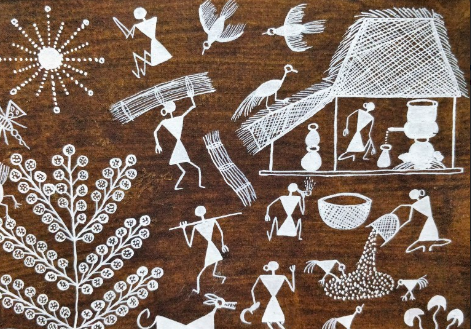
- Gond Art (Central India): Celebrated for its vibrant hues, intricate patterns, and rich mythological themes. Gond artists create detailed narratives featuring deities, animals, and celestial beings, inspired by nature and tribal lore.
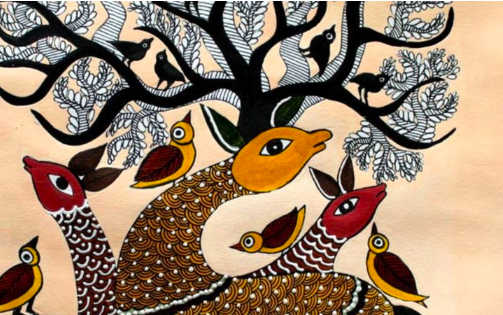
- Madhubani Painting (Bihar): A traditional art form passed down through generations of Maithil women. It is known for its intricate motifs, bold colours, and geometric patterns, often depicting scenes from Hindu mythology and rural life.
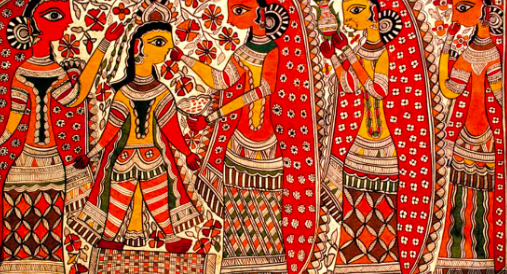
- Pattachitra Art (Odisha): Renowned for its meticulous detailing, vibrant colours, and mythological narratives. Painted on cloth or dried palm leaves, Pattachitra artworks frequently depict scenes from epics like the Ramayana and Mahabharata.
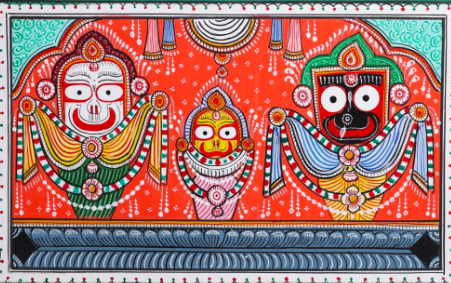
- Santhal Art (Eastern India): Features earthy tones, rustic charm, and tribal motifs. Santhal artists use natural materials like clay, dyes, and bamboo to create artworks reflecting their deep connection to the environment and community.
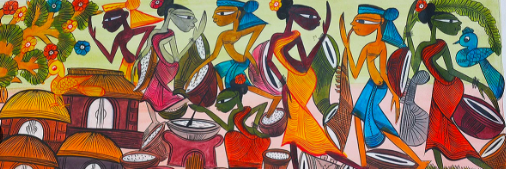
- Saura Painting (Odisha): Known for its vibrant colours, geometric patterns, and depictions of tribal deities and myths. Reflects the close relationship of the Saura tribe with nature and their spiritual beliefs.
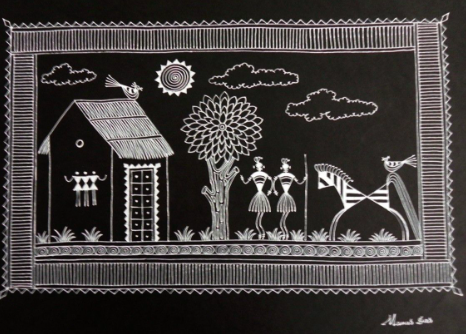
- Bhil Art (Rajasthan & Madhya Pradesh): Known for its intricate patterns, bold colours, and depictions of folklore and rituals. Traditionally created on walls, floors, or paper, featuring motifs inspired by nature, animals, and deities.
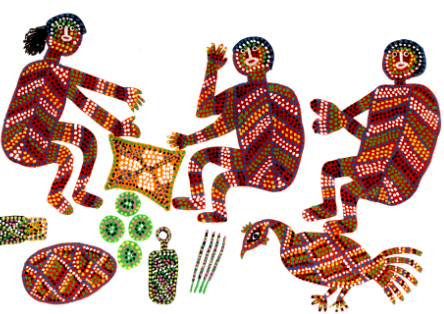
- Phad Painting (Rajasthan): A narrative art form that depicts stories of local deities, heroes, and legends. Created on large cloth scrolls, characterised by vibrant colours and intricate detailing.

- Pithora Painting (Gujarat & Madhya Pradesh): A ritualistic art form used to invoke blessings and ward off evil spirits. Features geometric patterns, animal motifs, and symbols of fertility and prosperity.
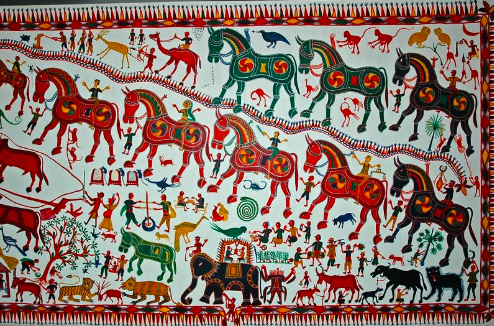
- Toda Embroidery (Tamil Nadu): Renowned for its intricate designs, geometric patterns, and use of natural materials. Often used to decorate traditional garments, reflecting the Toda tribe’s reverence for nature and pastoral lifestyle.
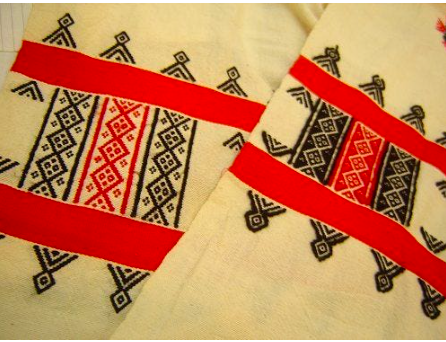
Tribal Art Safeguarding Culture in India
- A Living Archive of Tradition: Tribal art serves as a living archive, documenting the history, mythology, and social structures of these communities. For instance, Warli paintings depict hunting scenes and daily life, while Madhubani paintings narrate tales from epics, preserving these stories for future generations.
- Symbols Speak Louder Than Words: Rich in symbolism, tribal art conveys complex ideas through geometric patterns, motifs, and natural elements. Saura art, for example, uses dots and circles to represent the cosmos and the interconnectedness of life, transmitting knowledge, beliefs, and rituals without written language.
- A Voice for the Marginalised: Tribal art is a powerful medium for self-expression and advocacy. Bhil paintings, for instance, often depict struggles with displacement and environmental degradation, highlighting these issues and empowering communities to assert their identity and fight for their rights.
Challenges Faced by Tribal Art Forms in India
- Market Access and Exploitation: Middlemen often control the market, leaving artisans with a meagre share of profits. Lack of access to fair markets and proper pricing mechanisms creates economic hardship, discouraging younger generations from pursuing traditional art forms.
- Commodification and Loss of Meaning: As tribal art becomes commercialised, its cultural significance may dilute. Mass production and inauthentic adaptations can erode the inherent value and symbolism of these art forms.
- Urbanisation and Changing Lifestyles: Rapid urbanisation and evolving preferences threaten traditional art forms. The migration of younger generations to cities and the adoption of modern aesthetics pose risks to the preservation of traditional skills and knowledge.
- Lack of Documentation and Research: Many tribal art forms remain undocumented, making it challenging to understand their historical context and cultural significance. This lack of knowledge hampers efforts for preservation and promotion.
- Environmental Degradation: The availability of natural materials crucial for many art forms, such as clay, pigments, and fibres, is threatened by environmental degradation. This can lead to a decline in the quality and authenticity of the art.
Way Forward
- Supporting Tribal Artisans: Government initiatives like those by TRIFED (Tribal Cooperative Marketing Development Federation of India) can empower artisans by providing direct market access, training in business skills, and fair pricing mechanisms.
- Preservation and Documentation: Efforts by organisations like the Indira Gandhi Rashtriya Manav Sangrahalaya to document and archive tribal art forms are crucial. Research initiatives can provide insights into their history and cultural significance.
- Promotion and Awareness Campaigns: Raising public awareness through exhibitions, workshops, and media campaigns can create a wider market for authentic tribal art and foster appreciation for its cultural value.
- Educational Integration: Introducing tribal art forms into school curricula can inspire young minds, cultivate respect for indigenous cultures, and encourage future generations to continue these traditions.
- Sustainable Sourcing: Promoting sustainable practices for procuring raw materials can ensure the long-term viability of these art forms and protect the environment.
- Encouraging Innovation: Supporting creative adaptations that retain the essence of traditional art forms while appealing to contemporary audiences can broaden their appeal without compromising their cultural significance.
Conclusion
- Tribal art in India is not only visually stunning but also a powerful force for cultural preservation. By safeguarding these art forms, we protect the unique identities and heritage of India’s indigenous communities.
- Recognizing the value of tribal art and taking steps to ensure its continued vibrancy is crucial for preserving these traditions for future generations.
4. Tribal Culture – The Potential for Global Representation
Introduction
- India is home to over 700 tribal communities, making up approximately 8.6% of the population.
- These communities have developed unique cultural identities, traditions, and knowledge systems over millennia.
- Globalisation and development pose significant threats to their existence. This chapter explores the potential for tribal cultures to gain global representation, emphasising their significance and advocating for their inclusion on the world stage.
Significance of Tribal Cultures
- Sustainable Practices: Tribal communities have a profound connection with nature and have developed sustainable resource management practices. Their indigenous knowledge on agriculture, forestry, and water conservation is crucial in addressing climate change. For example, the Warli tribe in Maharashtra practises sustainable shifting cultivation that helps preserve soil fertility.
- Biodiversity Conservation: Tribals are key stewards of biodiversity hotspots, protecting ecosystems through their traditional practices. The Toda tribe of the Nilgiris, for instance, limits grazing during certain seasons to maintain ecological balance, highlighting their role in biodiversity conservation.
- Cultural Wealth: Tribal art, music, dance, and folklore are vibrant expressions of India’s cultural heritage. These forms of expression often reflect their relationship with nature and belief systems, contributing significantly to the nation’s cultural identity. Tribal cultural expressions enrich the national heritage by showcasing diverse artistic and cultural traditions.
Strategies for Global Representation
- Mainstreaming Tribal Knowledge: Incorporating tribal knowledge systems into mainstream education and development initiatives can enhance understanding and appreciation of their value. This integration can help elevate tribal knowledge and practices to a global audience, recognizing their relevance in contemporary issues.
- Promoting Art and Culture: Supporting tribal art, music, and dance through festivals, exhibitions, and cultural exchange programs can provide a global platform for their voices. Such initiatives can help raise awareness and appreciation of tribal cultures on the international stage, allowing them to share their rich heritage with a wider audience.
- Empowering Communities: Providing educational opportunities and skill development programs can empower tribal communities, enabling them to represent themselves effectively and contribute meaningfully to global discussions. Empowered communities can actively participate in dialogues about cultural preservation, environmental sustainability, and social justice.
Examples of Initiatives
- TRIFED (Tribal Cooperative Marketing Development Federation of India): This Government of India initiative promotes tribal products and handicrafts on both national and international scales. TRIFED aims to enhance market access for tribal artisans, helping them gain recognition and economic benefits for their traditional crafts.
- Van Dhan Vikas Yojana: This scheme is designed to empower tribal communities by establishing Van Dhan Kendras, which focus on the value addition and marketing of minor forest produce. The initiative supports tribal livelihoods by facilitating better market access and improving the economic value of forest resources.
Conclusion
- Tribal cultures are not relics of the past but offer valuable solutions for the future. Their potential for global representation is evident in their sustainable practices, contributions to biodiversity conservation, and cultural enrichment.
- Recognizing and promoting tribal knowledge systems, empowering communities, and facilitating their inclusion in global dialogues are essential steps toward creating a more inclusive and sustainable world.
- By acknowledging the significance of tribal cultures and supporting their representation on the global stage, we can enhance appreciation for their contributions and ensure their traditions and knowledge continue to benefit future generations.
5. Agriculture Festivals: Integral Part Of Tribal Culture
Introduction
- Tribal communities in India, and globally, maintain a profound connection with their land and the changing seasons.
- This connection is vividly reflected in their vibrant cultural expressions, with agricultural festivals being central to their cultural tapestry.
- These festivals are more than celebrations; they act as social glue, expressions of gratitude, and affirmations of tribal identity.
Significance of Agricultural Festivals
- Celebrating the Cycle of Life: Agricultural festivals mark key stages in the farming calendar, from sowing seeds to harvesting. For example, the Sarhul festival among the Munda tribe celebrates the beginning of the sowing season, while Nuakhai in Odisha marks the harvest. These events acknowledge the dependence on nature and show gratitude for successful crops.
- Social Cohesion and Sharing: Festivals strengthen social bonds within the community through shared rituals, feasting, and cultural performances. Events like the Karma dance during the Karma festival foster collective joy and emphasise the importance of cooperation and community spirit.
- Preserving Traditions: Agricultural festivals serve as repositories of ancient customs, songs, stories, and folklore passed down through generations. They play a crucial role in maintaining tribal heritage and identity amidst rapid societal changes.
- Propitiating Deities: Many agricultural festivals have religious significance, involving offerings to deities associated with fertility, land, and harvest. For instance, the Karma festival includes offerings to Karam Rani to ensure future agricultural prosperity.
Examples of Agricultural Festivals in India
- Sarhul (Jharkhand): Celebrated to mark the onset of spring and the sowing season. It includes rituals that honour the earth and seek blessings for a fruitful agricultural cycle.
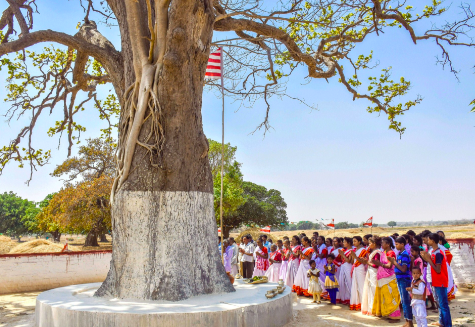
- Nuakhai (Odisha): A harvest festival where the first produce of the season is offered to the deity, followed by communal feasting and celebrations that express gratitude for the harvest.

- Baisakhi (Punjab): Marks the Punjabi New Year and coincides with the wheat harvest. The festival includes traditional dances, music, and offerings to celebrate the harvest and new beginnings.
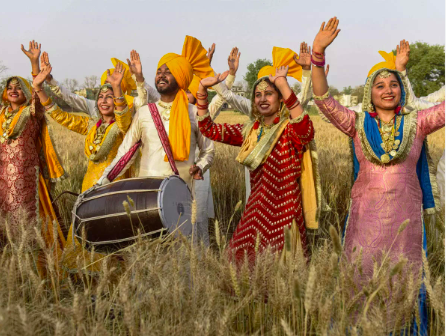
- Pongal (Tamil Nadu): A harvest festival dedicated to the Sun god, Surya, to thank him for a bountiful crop. It involves cooking a special dish called Pongal and making offerings to the Sun god.
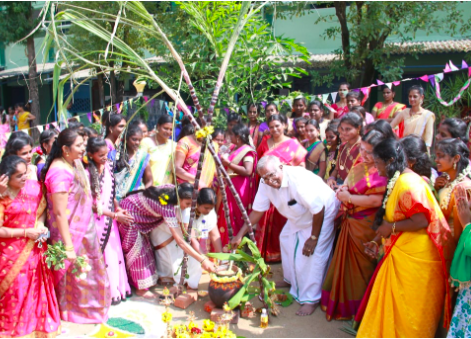
- Hornbill Festival (Nagaland): A week-long celebration showcasing the cultural heritage of various Naga tribes, including agricultural dances and displays of agricultural products, reflecting the community’s connection with farming.
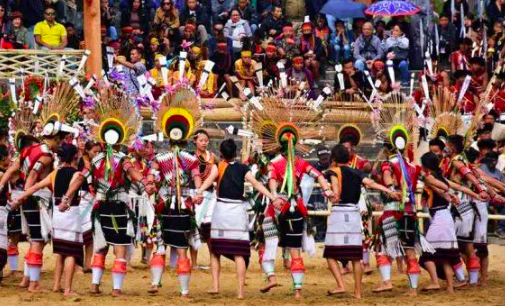
- Madai (Chhattisgarh): Celebrated by the Gond tribe, this harvest festival features vibrant performances, rituals seeking blessings for prosperity, and displays of agricultural tools and implements.
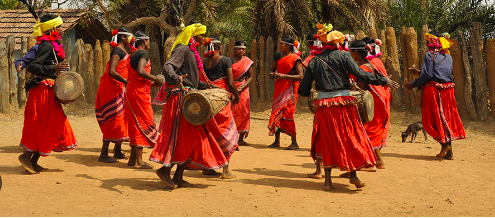
- Bhagoria (Madhya Pradesh & Maharashtra): A pre-Holi festival celebrated by the Bhil tribe, known for its lively festivities and social interactions. Though not purely agricultural, it often aligns with the harvest season and includes elements of matchmaking and community bonding.
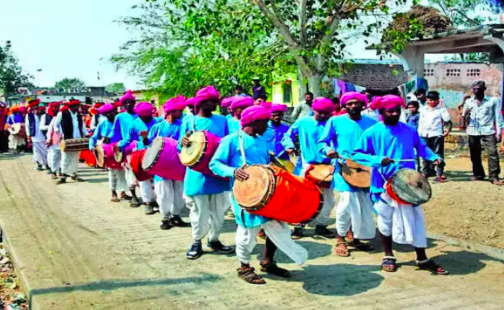
Challenges and the Way Forward
- Modernization and Urbanization: The traditional agrarian lifestyle of tribal communities faces threats from modernization and urbanisation, leading to a decline in the practice and significance of agricultural festivals.
- Climate Change: Unpredictable weather patterns due to climate change disrupt agricultural cycles, which can affect the timing and relevance of these festivals.
- Documentation and Preservation: Many tribal agricultural festivals are transmitted orally. Systematic documentation and awareness efforts are necessary to ensure their preservation and transmission to future generations.
Conclusion
- Agricultural festivals are integral to tribal cultures, serving as essential expressions of gratitude, social cohesion, and cultural preservation.
- Recognizing their significance and ensuring their continuity is crucial for preserving the rich heritage and traditions of tribal communities.
- Promoting these festivals and supporting tribal communities helps celebrate the deep connection between humanity and nature, reinforcing the value of these cultural practices in a rapidly changing world.
6. Tribal Folk Dances of Northeast India
Introduction
- The North-Eastern states of India, known as the “Seven Sisters” and Sikkim, are renowned for their rich cultural heritage and diverse traditions.
- A prominent feature of this cultural mosaic is the vibrant array of tribal folk dances, which are integral to the social and cultural life of the region.
- These dances go beyond mere entertainment; they celebrate agricultural cycles, showcase martial skills, and narrate ancient stories.
Celebrating Life’s Rhythms
- Bihu (Assam):
- Bihu is a lively celebration marking the Assamese New Year and the spring harvest.
- The festival features energetic group dances performed by men and women.
- Dancers are accompanied by the rhythmic beats of traditional dhol drums, reflecting the joy and excitement of the season.
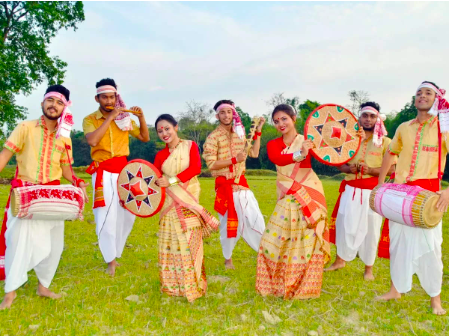
- Wangala Dance (Meghalaya):
- The Wangala, or “Hundred Drum Dance,” is performed by the Garo tribe.
- It is a vibrant display of rhythmic footwork and synchronised drumming, celebrating the harvest season.
- The dance involves complex patterns and coordination, showcasing the community’s festive spirit.

- Nongkrem Dance (Meghalaya):
- Performed by the Khasi tribe, the Nongkrem Dance is a significant part of the Nongkrem festival.
- This ceremonial dance involves dancers in colourful attire gracefully circling a large monolith.
- It symbolises prosperity and gratitude for a bountiful harvest.
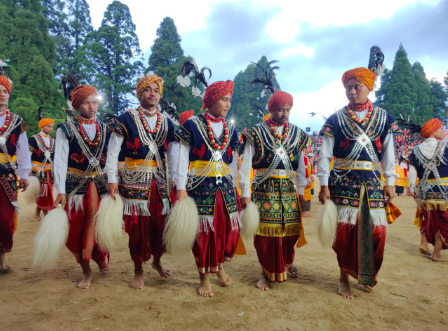
- Hojagiri (Tripura):
- Also known as the “Fire Dance,” Hojagiri is performed by the Tripuri community.
- Dancers twirl flaming torches in intricate patterns, demonstrating bravery and skill.
- The dance seeks blessings for good health and prosperity, reflecting the community’s resilience.

- Cheraw Dance (Mizoram):
- The Cheraw, or “Bamboo Dance,” is a dynamic performance involving skillful manoeuvring on bamboo poles.
- Dancers mimic bird movements and demonstrate agility as they step in and out of the bamboo poles.
- This dance highlights the community’s collective spirit and coordination.
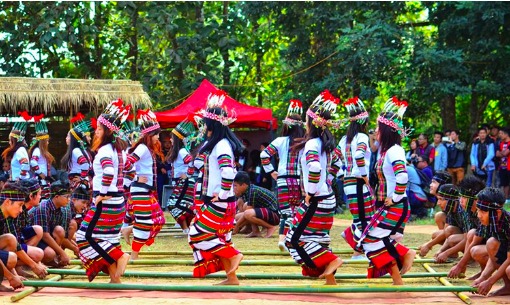
- Kuki Dance (Manipur & Nagaland):
- Performed by the Kuki tribes, this energetic dance showcases their martial heritage.
- Dancers, dressed in traditional attire and wielding mock weapons, depict hunting and battle skills.
- The performance emphasises the tribe’s historical warrior culture.
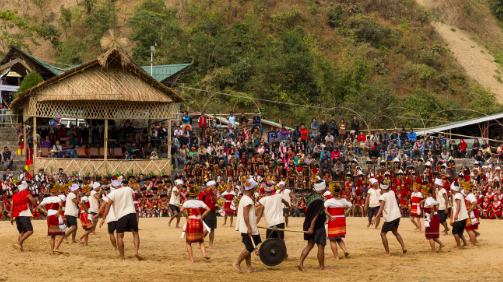
- Thang-Ta (Manipur):
- Thang-Ta is a traditional martial art form from Manipur, combining dance and combat techniques.
- The dance features energetic movements and mock combat sequences, illustrating the strength and fighting spirit of the community.
- It serves as both a display of martial prowess and a cultural ritual.
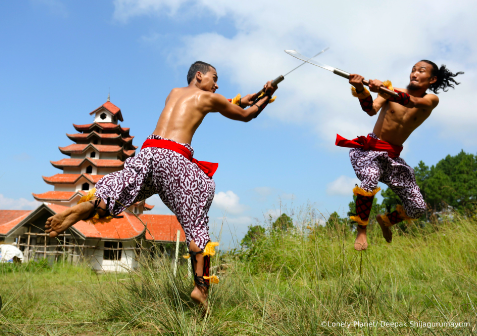
- Bardoichila (Assam):
- The Bardoichila dance is performed by the Bodo tribe and celebrates the arrival of the monsoon season.
- Dancers, dressed in white and adorned with flowers, symbolise the life-giving rains essential for agriculture.
- The graceful movements reflect the importance of the rains in sustaining crops and life.

- Zeliang Dance (Nagaland):
- The Zeliang Dance is performed by the Zeliang tribe and is known for its distinctive headgear and rhythmic footwork.
- The dance narrates stories of the community’s history and traditions through its lively and expressive movements.
- It serves as a means of preserving and transmitting cultural heritage.
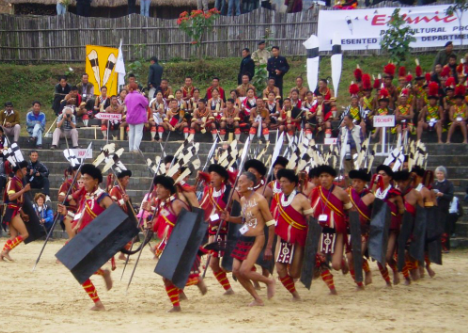
- Aoling (Nagaland):
- The Aoling dance is performed by the Konyak tribe during the Aoling festival.
- This festival marks the end of winter and the beginning of spring, celebrating the arrival of the new season.
- Dancers, adorned in vibrant attire, express their joy and welcome the new season with exuberant performances.
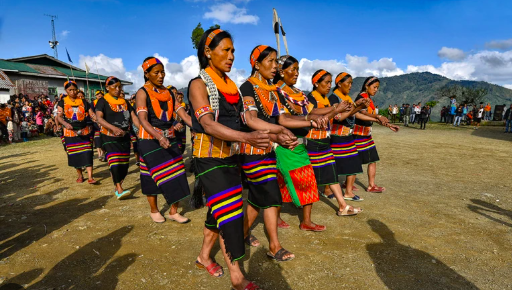
Conclusion
- The tribal folk dances of North-Eastern India are more than cultural expressions; they are vital components of the region’s social fabric.
- These dances celebrate agricultural cycles, showcase traditional skills, and preserve stories and traditions.
- By embracing and supporting these vibrant dance forms, we honour the rich cultural heritage of the North-Eastern tribes and ensure the continuation of their traditions for future generations.
7. Embracing Diversity: Cultural Heritage of Tribes in India
Introduction
- India is home to over 700 tribal communities, each with its own unique cultural identity, traditions, and way of life.
- The diverse cultural heritage of these tribes reflects their deep connection to nature, history, and social structures.
- Embracing this diversity is crucial for preserving the rich tapestry of India’s cultural landscape and ensuring that tribal traditions continue to thrive.
Significance of Tribal Cultural Heritage
- Rich Tradition and History:
- Tribal cultures in India are characterised by ancient traditions and practices passed down through generations.
- These traditions include distinctive art forms, rituals, and social customs that reflect the tribes’ historical experiences and societal values.
- Examples include the Warli art of Maharashtra and the Gond paintings of Central India, which offer insights into the daily lives, beliefs, and environmental interactions of their respective tribes.
- Connection to Nature:
- Many tribal communities maintain a deep spiritual and practical connection to their natural surroundings.
- Their traditional practices emphasise sustainability and harmony with nature, evident in their agricultural techniques, resource management, and rituals.
- For instance, the Toda tribe of the Nilgiris engages in seasonal grazing practices to maintain ecological balance.
- Cultural Practices and Festivals:
- Tribal festivals and ceremonies play a crucial role in preserving cultural heritage and reinforcing community bonds.
- These celebrations often mark important agricultural milestones, religious observances, and seasonal changes.
- Festivals such as Bihu in Assam, Baisakhi in Punjab, and Pongal in Tamil Nadu illustrate the integral role of agriculture in tribal societies and their vibrant celebratory traditions.
Tribal Art Forms and Crafts
- Visual Arts:
- Tribal art forms are distinguished by unique styles, motifs, and techniques reflecting the tribes’ environment, beliefs, and daily activities.
- Warli art uses simple geometric shapes to depict scenes from everyday life, while Gond art features intricate patterns and vivid colours inspired by nature.
- Madhubani painting, passed down through generations of Maithil women, is known for its detailed depictions of mythology and rural life.
- Craftsmanship:
- Tribal craftsmanship includes traditional skills such as weaving, embroidery, pottery, and metalwork.
- The Toda embroidery of Tamil Nadu and bamboo crafts from the North-Eastern states are examples of intricate and skilled work that contribute to the tribes’ cultural identity.
- The vibrant Phulkari painting of Punjab and Dokra jewellery from Chhattisgarh showcase traditional artistry with unique patterns and designs.
- Tie and Dye Patterns:
- The tie-and-dye techniques, such as Pochampally in Telangana, reflect the tribes’ skills in textile arts.
- Pochampally patterns are known for their geometric designs and vibrant colours, demonstrating the tribes’ expertise in creating intricate fabric designs.
Social Structures and Traditions
- Community Life:
- Tribal societies often have distinct social structures and governance systems integral to their way of life.
- Community decision-making, rituals, and festivals are central to maintaining social cohesion and cultural continuity.
- The Adivasi communities of Jharkhand, for instance, have traditional councils that play a vital role in resolving disputes and making collective decisions.
- Rituals and Beliefs:
- Tribal rituals and belief systems are deeply rooted in their spiritual and cultural heritage.
- These rituals often involve offerings to deities, ancestors, and natural elements, reflecting respect for forces that influence their lives.
- Saura art from Odisha and ceremonial dances during festivals express tribal beliefs through artistic and ritualistic practices.
Language and Folklore
- Multitude of Languages and Dialects:
- India’s tribal communities speak a rich variety of languages and dialects, reflecting their diverse cultural backgrounds.
- This linguistic diversity contributes to the rich tapestry of tribal culture, with languages often carrying unique oral traditions and folklore.
- Tribal Folklore:
- Tribal folklore plays a significant role in preserving and transmitting cultural narratives and traditions.
- Stories, myths, and legends are passed down orally, encompassing themes of creation, morality, and community values.
- For example, the Santhal tribe’s folklore includes stories of their historical heroes and spiritual beliefs.
Contribution to Music and Theatre
- Music Industry:
- Tribal music has significantly contributed to India’s musical landscape, blending traditional instruments and rhythms with contemporary influences.
- The Santhal tribe’s musical performances often incorporate traditional drums and dance, showcasing their rich musical heritage.
- Theatre:
- Tribal theatre forms, such as the Santhal-Pirama theatre, offer a unique perspective on traditional storytelling and performance arts.
- These performances often include elements of dance, music, and drama, reflecting the tribes’ cultural narratives and rituals.
Traditional Clothing and Patterns
- Traditional Clothing:
- Tribal clothing is characterised by its vibrant colours, intricate designs, and practical functionality.
- The Manipuri women’s attire, such as Phanek (a traditional wraparound skirt) and Innaphis (shawls), reflects the tribe’s cultural and aesthetic sensibilities.
- These garments are often adorned with traditional embroidery and patterns, showcasing the tribes’ craftsmanship.
- Tie and Dye Patterns:
- The Pochampally tie-and-dye patterns from Telangana are renowned for their geometric designs and vibrant hues.
- This traditional textile art form highlights the tribes’ skill in creating visually striking and culturally significant fabric designs.
Challenges and the Way Forward
- Modernization and Urbanization:
- Rapid modernization and urbanisation pose threats to traditional tribal lifestyles, leading to the erosion of practices and cultural displacement.
- Efforts to preserve and promote tribal heritage must address these challenges by integrating traditional knowledge with contemporary needs.
- Cultural Dilution:
- The commercialization of tribal art and crafts can lead to a dilution of cultural significance, undermining the authenticity of traditional practices.
- Supporting genuine artisanal practices and ensuring fair trade are essential for maintaining the integrity of tribal heritage.
- Environmental Degradation:
- Environmental changes impact resources and landscapes central to tribal cultures, affecting traditional practices and livelihoods.
- Conservation efforts must include tribal perspectives to effectively address environmental challenges.
Conclusion
- Embracing the diversity of tribal cultures in India is vital for preserving the nation’s rich cultural heritage.
- Recognizing and supporting the unique traditions, art forms, and social structures of tribal communities helps ensure that their cultural contributions are valued and sustained.
- By addressing challenges such as modernization, cultural dilution, and environmental degradation, we can work towards a more inclusive and respectful recognition of the tribal cultures that form an integral part of India’s identity.

